




Introduction
Insects are the largest group of animals. About 75 percent of all animals come under the insect category. The insects were developed on Earth long before humans did. Today, there are about 1 million known species and types of insects. Scientists are still constantly discovering new species of insects.
The insects are found all over the world. They can survive globally at any place where food is available. For instance, insects can be found in cold regions, hot rainforests, deserts, mountains, caves, and freshwater. Even a few kinds of insects live in saltwater.
What are Insects?
The insects are members of a larger group called the arthropods. This is the group of insects that includes spiders, ticks, centipedes, lobsters, and crabs. Like all other arthropods, the insects also have a body that is divided into segments or sections. They also don't have a skeleton inside the body.
Instead of the skeleton, the insects and other arthropods have a covering on the outside of the body known as an exoskeleton. This exoskeleton helps them to protect their body. Unlike other arthropods, insects have three main body segments. The insects also contain six legs. In this way, the insects differ from the spiders, with eight legs. The insects also contain at least one pair of antennas.
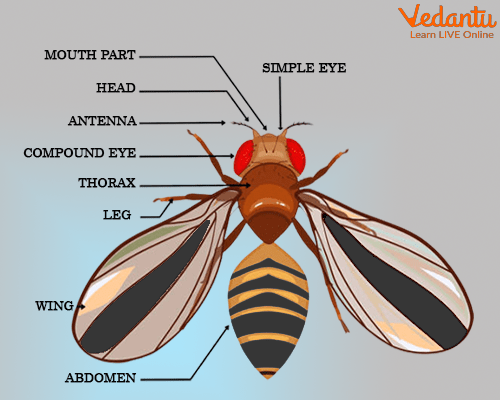
Different Parts of Insects
Parts of an Insect
The parts of an insect are listed below:
Antenna
Simple eye
Compound eye
Frong wing
Hind wing
Leg
Abdomen
Thorax
Head
It is divided into three major segments, i.e., the head, the thorax, and the abdomen. The head has the insect’s antennae, mouthparts, and eyes. The adults of insects and many species have two kinds of eyes, i.e., simple and compound. The compound eyes contain many lenslike parts. Each of these captures a separate image. These images are combined into a single picture in an insect's brain.
Thorax
The thorax contains three pairs of legs and mainly two pairs of wings. Some insects contain only one pair of wings or have no wings at all. The insects can vary greatly in size. So many insects are small in size, less than 0.2 inches (6 millimetres) long. Whereas some insects known as walking sticks can grow to more than 12 inches (30 centimetres) long. The abdomen of an insect is made up of a maximum of 11 segments. It contains organs that digest food, then pushes out waste, and helps the insect to reproduce.
Insects Pictures with Names for Kids
The below-given picture shows the insects with the name.
Butterflies
The butterflies have four wings. They use their feet to taste and smell the flowers. They also have two antennas which help them know the time of the day. They don’t have mouths, they have a long straw-like tongue known as a proboscis.

Butterfly
Beetles
The Beatles are found in a variety of colours. They are one of the world's oldest animals. They can live everywhere as they can live in the hot environment as well as in the coldest ones. Mostly, the lifespan of a beetle is one year. They are not considered pests.
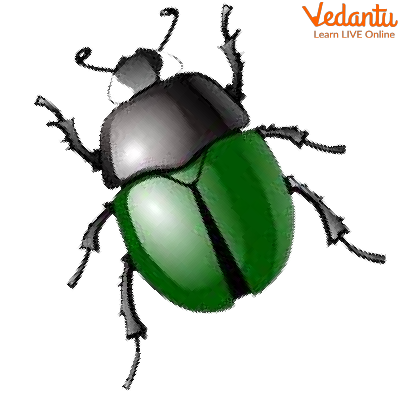
Beetle
Ants
The ants live with their queen in the colony. When the queen dies, a colony cannot survive more than a few months. They can lift more than 10 to 15 times their body weight.
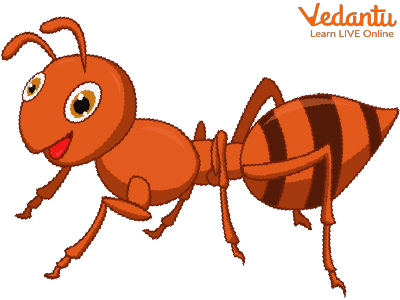
Ant
Flies
The flies can be found everywhere in the world except for the ice caps of the South and North poles. They have the ability to taste with their feet. They can multiply so quickly. There are some diseases that spread through flies.
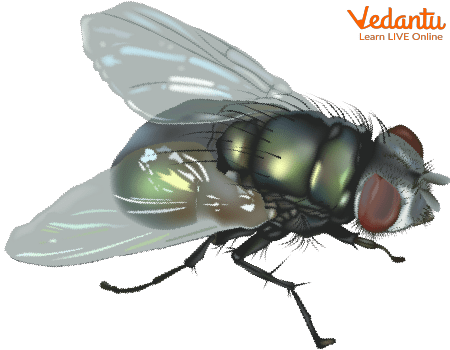
House Fly
Grasshoppers
The grasshoppers have long legs, hence they are good at jumping. They have special eyes that allow them to see in all directions at once. Some grasshoppers have the ability to fly. Mostly, they are found in green or brown colours.
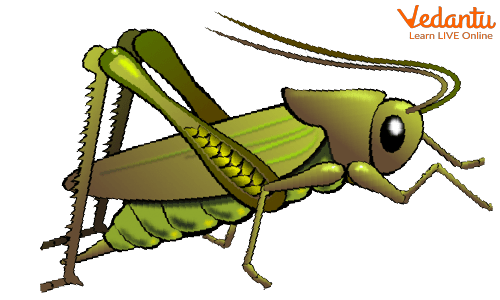
Grasshopper
Fun Facts
Many insects are helpful to humans and to other animals. Some species of insects eat other insects that are pests. The insects are also a type of food for other animals. There are insects that produce valuable products such as honey, silk, and dyes. So many flowering plants are dependent on insects, for example, the bees to help them reproduce. As insects feed on flowers, they spread a substance called pollen from the male parts of flowers to the female parts. This allows the female parts to make seeds.
Summary
The insects have so many different ways to protect themselves from their enemies. For example, some insects hide by blending into their surroundings.
There are some insects that live alone, while others live in groups. Insects eat many plants, animals, and other living things. Mainly the insects hatch from eggs. Only a few kinds are born alive.
FAQs on Insects for Kids
1. What is a deadly insect?
Around the world, harmful bug species harm people, their cattle, crops, and property. Some of them assault the host organism's (plant or animal) body and either suck sap or blood or consume the tissues, making them direct pests.
2. Can people live in a world without insects?
We would lose the majority of reptiles and amphibians as well as nearly half of all bird species if there were no insects for them to consume. A significant portion of the decomposition process, which replenishes the soil with nutrients from dead plants and animals, is carried out by insects.
3. Do insects go to sleep?
Yes, insects do sleep, to make a long story short. Their bodies need time to rest and recover, just like those of all other creatures with central nervous systems. However, not every bug sleeps the same. When an insect wants to eat, its circadian rhythm—the regular cycle of awake and asleep time—changes.





















